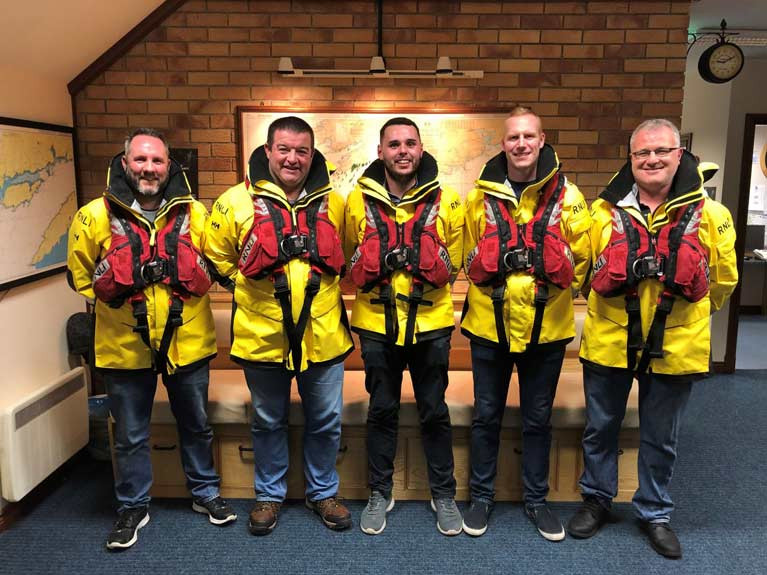A new book providing a collection of first-hand accounts of some of the most dramatic rescues carried out by RNLI lifesavers around Ireland and the UK over the past 20 years, features an incredible feat of bravery by a Cork lifeboat crew. Told in the words of Castletownbere RNLI Coxswain Dean Hegarty, it provides a first-hand account of the dramatic rescue of a fishing crew in storm force conditions after their vessel lost all power at the harbour entrance of Castletownbere in West Cork. Six lives were saved that night and the Coxswain is set to receive a medal for gallantry, and the crew and launching authority, letters of thanks from the Institution. The book Surviving the Storms goes on sale today (Thursday 11 June) with royalties from all sales supporting the lifesaving charity.
 Surviving the Storms features 11 stories of extraordinary courage and compassion at sea
Surviving the Storms features 11 stories of extraordinary courage and compassion at sea
Surviving the Storms features 11 stories of extraordinary courage and compassion at sea, providing a rare insight into the life-or-death decisions the RNLI have to make when battling the forces of nature and saving lives.
The Castletownbere RNLI rescue from 2018 is included with those of a Northern Ireland lifeboat mechanic who swam into a cave to rescue two teenage boys when they became trapped with a rising tide in dangerous conditions and lifeguards in Cornwall saving the lives of people, moments away from drowning. This book has an abundance of drama told from the unique perspective of the RNLI lifesavers, as well as those they rescue.
In an extract from the book Dean Hegarty, who at 24-years old had been on the lifeboat crew for five years and was a recently appointed Coxswain on his second callout in charge, explains what he saw when he and his lifeboat crew came on scene.
‘Within 10 minutes of the original mayday call, we were on the scene. What I saw when we arrived, I can’t lie; It almost gave me a heart attack. The way the tide was going out and the wind was coming in, it was churning the sea up and creating a big, watery explosion. There were huge swells reaching six metres, the height of a two-storey house, tossing the fishing boat around like a rag doll and pushing her ever closer to the sixty-metre cliffs to the west of the harbour mouth. The gales were now peaking at storm force 11. My heart started to race as I watched waves crashing up against the cliffs, with the vessel only 30 or so metres away from the rocky shoreline.’
RNLI Chief Executive, Mark Dowie, said: ‘Surviving the Storms is a wonderful account of selflessness and bravery although there is no book big enough to do justice to every RNLI rescue and rescuer. We have hundreds of lifeboat stations and thousands of crew members and lifeguards all dedicated to saving lives. Between them, they’ve helped so many people survive the storms and I’m proud of every one of them.’































































